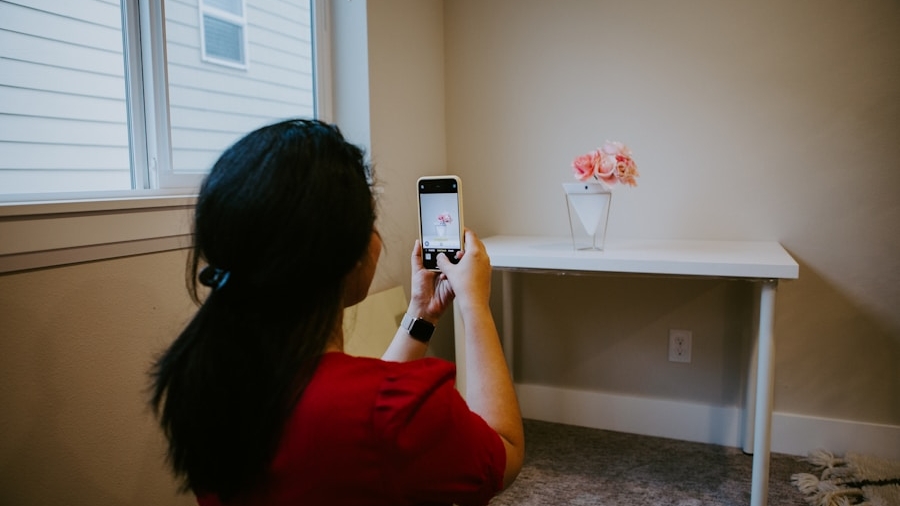The concept of smart home accessibility has gained significant traction in recent years, driven by advancements in technology and a growing awareness of the need for inclusive living environments. Smart home technology refers to the integration of devices and systems that can be controlled remotely or automatically, enhancing the quality of life for individuals, particularly those with disabilities or age-related challenges. Accessibility in this context means creating an environment that accommodates the diverse needs of all users, ensuring that everyone can interact with their living spaces comfortably and independently.
As the population ages and the prevalence of disabilities increases, the demand for accessible living solutions has never been more pressing.
By leveraging smart sensors, homeowners can create a more inclusive atmosphere that not only meets the needs of individuals with mobility or sensory impairments but also enhances the overall living experience for everyone.
This article delves into the various roles that smart sensors play in promoting accessibility within smart homes, exploring their applications in safety, energy efficiency, comfort, and integration with assistive technologies.
Key Takeaways
- Smart home accessibility refers to the use of technology to make homes more accessible and convenient for people with disabilities or limited mobility.
- Smart sensors play a crucial role in smart home accessibility by detecting and responding to changes in the environment, enabling automation and remote monitoring.
- Smart sensors enhance safety and security in smart homes by detecting intruders, monitoring for smoke and gas leaks, and providing emergency alerts.
- Smart sensors contribute to improved energy efficiency in smart homes by regulating heating, cooling, and lighting based on occupancy and environmental conditions.
- Smart sensors also enhance comfort and convenience in smart homes by automating tasks such as adjusting temperature, controlling lighting, and managing appliances.
The Role of Smart Sensors in Smart Home Accessibility
Enhancing Safety and Independence
For instance, motion sensors can trigger lights to turn on automatically when someone enters a room, reducing the risk of falls for individuals with mobility challenges. Moreover, smart sensors can be integrated with various devices to create a cohesive ecosystem that enhances accessibility.
Personalized Comfort and Convenience
For example, a smart thermostat equipped with temperature sensors can adjust heating or cooling based on occupancy patterns, ensuring that individuals with limited mobility are comfortable without needing to manually adjust settings.
Promoting Well-being and Security
This level of automation not only promotes independence but also fosters a sense of security and well-being among users who may otherwise struggle with traditional home management tasks.
Smart Sensors for Enhanced Safety and Security

Safety is a paramount concern for individuals living in smart homes, particularly for those with disabilities or elderly residents who may be at greater risk of accidents or emergencies. Smart sensors play a crucial role in enhancing safety by providing real-time monitoring and alerts. For instance, smoke detectors equipped with smart sensors can send notifications to a homeowner’s smartphone if smoke is detected, allowing for immediate action even if the individual is not at home.
This feature is particularly beneficial for those who may have difficulty hearing traditional alarms. In addition to fire safety, smart sensors can also enhance security through surveillance and intrusion detection systems. Motion sensors placed around the perimeter of a home can alert residents to any unusual activity, while door and window sensors can notify homeowners if an entry point is breached.
For individuals with cognitive impairments or memory issues, these systems can provide peace of mind by ensuring that their living environment is secure. Furthermore, some smart security systems can be programmed to contact emergency services automatically in case of a break-in or other urgent situations, further enhancing the safety net for vulnerable populations.
Smart Sensors for Improved Energy Efficiency
Energy efficiency is another critical aspect of smart home accessibility that benefits from the integration of smart sensors. These devices can monitor energy consumption patterns and optimize usage based on real-time data. For example, smart lighting systems equipped with occupancy sensors can automatically turn off lights in unoccupied rooms, reducing energy waste and lowering utility bills.
This feature is particularly advantageous for individuals who may forget to turn off lights or appliances due to cognitive challenges. Additionally, smart thermostats utilize temperature sensors to learn user preferences and adjust heating and cooling accordingly.
This not only contributes to cost savings but also supports environmental sustainability efforts by reducing overall energy demand. For individuals on fixed incomes or those who prioritize eco-friendly living, these energy-efficient solutions represent a significant advantage.
Smart Sensors for Enhanced Comfort and Convenience
The integration of smart sensors into home environments significantly enhances comfort and convenience for all residents, particularly those with disabilities or mobility limitations. For instance, smart lighting systems can be programmed to adjust brightness levels based on the time of day or individual preferences, creating an inviting atmosphere without requiring manual adjustments. Voice-activated assistants can further streamline this process by allowing users to control lighting and other devices through simple voice commands.
Moreover, smart sensors can facilitate personalized experiences tailored to individual needs. For example, smart beds equipped with pressure sensors can monitor sleep patterns and adjust firmness levels accordingly to promote better rest. Similarly, smart appliances such as refrigerators and ovens can be programmed to provide reminders or alerts based on user preferences or dietary restrictions.
This level of customization not only enhances daily living but also empowers individuals to maintain their independence while enjoying a higher quality of life.
Integration of Smart Sensors with Assistive Technologies

Enhancing Mobility and Accessibility
For example, individuals who rely on wheelchairs or mobility aids can benefit from smart door openers equipped with motion sensors that automatically open doors as they approach. This eliminates the need for manual operation and reduces barriers within the home environment.
Improving Communication and Safety
Similarly, smart home systems can be integrated with hearing aids or visual alert systems to provide notifications for doorbells or alarms through vibrations or visual cues, ensuring that individuals with hearing impairments are not left out of critical communications.
Remote Health Monitoring and Intervention
Furthermore, the integration of smart sensors with telehealth solutions allows healthcare providers to monitor patients remotely and provide timely interventions when necessary. For instance, wearable devices equipped with health monitoring sensors can track vital signs and send alerts to caregivers if any abnormalities are detected. This capability not only enhances health management but also fosters a sense of security for individuals living alone.
Challenges and Limitations of Smart Sensors in Smart Home Accessibility
Despite the numerous benefits associated with smart sensors in promoting accessibility within homes, several challenges and limitations must be addressed to maximize their potential impact. One significant concern is the issue of interoperability among different devices and platforms. Many smart home products are manufactured by various companies, leading to compatibility issues that can hinder seamless integration.
Users may find themselves locked into specific ecosystems that do not communicate effectively with other devices, limiting their ability to create a fully accessible environment. Another challenge lies in the digital divide that exists among different populations. While younger generations may be more adept at navigating technology, older adults or individuals with disabilities may face barriers in understanding how to use these systems effectively.
This gap can lead to frustration and reluctance to adopt smart home technologies that could significantly improve their quality of life. Additionally, concerns about privacy and data security are paramount; as homes become increasingly connected, the risk of unauthorized access to personal information grows.
The Future of Smart Sensors in Smart Home Accessibility
Looking ahead, the future of smart sensors in enhancing home accessibility appears promising as technology continues to evolve at an unprecedented pace. Innovations such as artificial intelligence (AI) and machine learning are poised to revolutionize how smart sensors operate within homes. These technologies will enable devices to learn from user behavior over time, allowing for even greater personalization and responsiveness to individual needs.
Moreover, as awareness around accessibility issues grows, manufacturers are likely to prioritize inclusive design principles when developing new products. This shift could lead to more user-friendly interfaces and improved compatibility among devices from different brands. Additionally, advancements in voice recognition technology will likely enhance interaction capabilities for individuals with mobility impairments or cognitive challenges.
As society continues to embrace the concept of aging in place and independent living for individuals with disabilities, the role of smart sensors will become increasingly vital in creating environments that support these goals. By addressing current challenges and leveraging emerging technologies, we can look forward to a future where smart home accessibility is not just an option but a standard feature in every household.
If you’re interested in exploring the latest technology trends, you may want to check out this article on the best Android apps for 2023. It provides insights into the top apps that can enhance your smartphone experience. Additionally, if you’re looking to unlock your potential with a new device, you might want to read about the Samsung Galaxy Book2 Pro. This article highlights the features and capabilities of this cutting-edge laptop. Lastly, if you’re curious about the difference between a graphic tablet and a drawing tablet, you can learn more by reading this informative piece.
FAQs
What are smart sensors?
Smart sensors are devices that can detect and measure physical input from the environment and convert it into data that can be analyzed and used for various purposes. These sensors are often used in smart home technology to automate and enhance the functionality of various devices and systems.
How do smart sensors enhance smart home accessibility features?
Smart sensors can enhance smart home accessibility features by detecting and responding to the presence and movements of individuals within the home. For example, smart sensors can be used to automate lighting, temperature control, and security systems based on the specific needs and preferences of the occupants.
What types of smart sensors are commonly used in smart home accessibility features?
Common types of smart sensors used in smart home accessibility features include motion sensors, door and window sensors, temperature and humidity sensors, and occupancy sensors. These sensors can be integrated into smart home systems to provide a more accessible and convenient living environment for individuals with disabilities or mobility challenges.
How do smart sensors benefit individuals with disabilities in a smart home environment?
Smart sensors can benefit individuals with disabilities in a smart home environment by providing greater independence, safety, and convenience. For example, smart sensors can automatically adjust lighting and temperature settings, open and close doors, and alert caregivers or emergency services in the event of a fall or other emergency.
What are some examples of smart home accessibility features that can be enhanced by smart sensors?
Examples of smart home accessibility features that can be enhanced by smart sensors include automated door openers, voice-activated controls, smart lighting and climate control systems, and remote monitoring and alert systems. These features can help individuals with disabilities to navigate and interact with their home environment more easily and independently.

